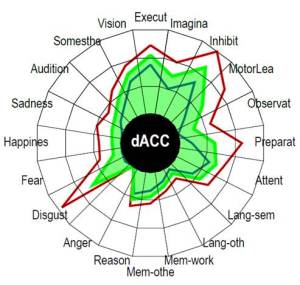I finally got to reading Lange’s The Emotions: A Psychophysiological Study from 1885 (English 1922 translation of the German version) and found the most amazing thing: a dual-pathway, “low” and “high” road model of emotional processing:

From Lange (1885). The “low road” goes from the eye to CO’ to CV — all subcortically. The “high road” goes up via cortex before coming down to CV.
The pathway from the eye to CO’ leads to CV rather directly. CV is a motor stage somewhere unspecified but in the brainstem. This applies to “simple” cases. But when a “mental process” is involved, cortical stages of vision and taste must be engaged, namely CO” and CG”. Now, the “impulses” get to CV from cortex!
I didn’t know about this passage, which I found rather stunning!
Here’s what Lange says himself: “… those emotions which are due to a simple sense impression, a loud noise, a beautiful color combination, etc., the path to the vasomotor center must be quite direct, and the cerebral mechanism but slightly complicated… The matter becomes somewhat more complicated when those affections are involved which are produced not by a simple impression upon some sense-organ, but by some ‘mental process,’ some memory or association of ideas, even if the latter be due to
sense-impression.”
Do you know of earlier formulations of this type of dual-route model? If so, let me know!
Filed under: Uncategorized | Tagged: emotion, subcortical pathway | Leave a comment »




